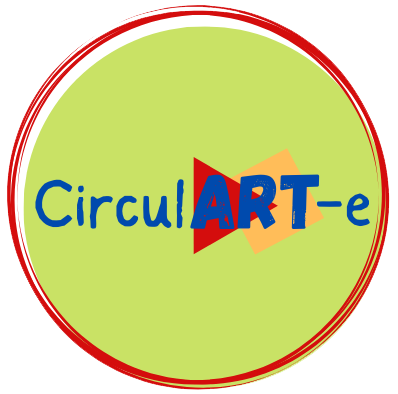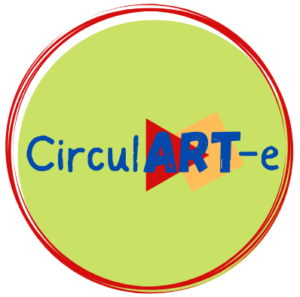Explore the toolkit and activities here
Step by step through the toolkit
Step 1 – Choose your topic
This is already done!
If you want to explore a different topic, you can go back to the overview and choose a different one.
Step 2 – Find your activity
Now, we invite you to explore the activities. Each activity features a step-by-step description and more information on duration, number of participants, and more…
Step 3 – Explore the materials
You can choose whichever activity fits your needs and your learners best. Some activities also provide further information in the form of a tutorial video, printable handouts, as well as additional resources.
Circular City Tour
The aim of this activity is to discover and analyse the signs of circularity surrounding us in our everyday environment. Searching for the signs of circularity in the city will also permit the participants to observe and discover new urban and visual elements, new details in their neighbourhood.
This activity is by definition a blended one as it happens outside from the meeting room, It can be done in the frame of a training (for instance, during an afternoon), or remotely, before the raining, permitting the participants to collect pictures from the neighbourhood in advance.
Skills addressed
Expected learning achievements
Duration
90 minutes
Group size
There is no limit of the number of participants
Materials
Map of the city or neighbourhood, at least one smartphone/ group
Business Logo Designing on Up-cycled Tote Bags
The activity globally addresses the 3 main needs identified through the empathy map phase: communication skills, professional skills and self-knowledge skills. In fact, this activity is a way to encourage young people to initiate a smooth dialogue with the local society by observing their neighbourhood and its professional life (discovery phase by collecting real logos in town). Then, young people initiate an analysis of communication elements and their efficiency in terms of the market, while the creative part invites them to position themselves in this space by reflecting on their own identity and professional objectives. More specifically, this activity enables young people to practise their existing observation skills, manual basic abilities and linguistic knowledge of the hosting country. But it also aims at developing the analytical skills of young people in visual identity and intercultural skills on one hand and at raising awareness of environmentally-friendly creative practices through an introduction to upcycling and circular lifestyle on the other hand. Finally, the blended setting of this activity enables young people to work on their digital skills by capturing images of the city in the field of professional life, manipulating images in a photo gallery or using collaborative apps (cf. Miro Board) to work remotely with other participants.
The collection of logos can be organised as a blended activity. Participants can take photos in their own neighbourhood or anywhere else they wish to individually or in group. The introductory conversation and reflection phase can be also organised online within a blended session, using miro board and screen share to show each other’s photos.
Skills addressed
Expected learning achievements
Duration
120 to 180 minutes
Group size
4 – 10 participants
Materials
Personal smartphones to take photos + a photo collection of different types of logos (on Pinterest for instance), white paper, upcyclable tote bags, pencils, erasers, rulers, compass, textile or Posca markers, tapes
My Dream
The activity aims to strengthen analytical and visual skills by having participants represent complex ideas in a visual form using the technique of collage-making. Besides, it boosts social skills by facilitating interactions and providing an opportunity for public speaking and presentation.
You can also prepare the collages online via tools like Conceptboard or Jamboard.
Skills addressed
Expected learning achievements
Duration
Min. 60 minutes
Group size
4+ participants
Materials
- Room with enough space for individual work
- Paper sheets and blank posters
- Markers, glue, scissors
- Magazines, news papers, photos, post cards, or other
- Varied visual materials
Mapping the space around
In this activity participants create a map of their personal surroundings to identify resources and strengths that might have roots in their hometowns or countries, but can be used in the current one.
#1 To give more emphasis on individual work and the exploration of the areas where participants live (rather than the area where the group meets): the instruction takes place face-to-face, then the participants do the exploring in their own neighborhoods, and only meet again for the conversation, showing each-other their artworks. Participants print and draw by themselves. If there is no possibility to print, they can copy the photos on a map as drawings.
#2 To involve people who are in different cities or even countries: instructions are taking place online, then participants do the exploring, and they meet again online, in which case they can also create a digital map using a platform like Canva that allows them to upload photos, draw or add other elements.
Skills addressed
Expected learning achievements
Duration
120 minutes
Group size
4+ participants
Materials
1 mobile phone or camera per participant, printer
A4 paper, glue, markers, pens, brushes, paint, small stones


